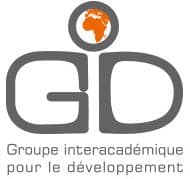Introduction
Since the late 1990s, the Senegalese Ministry of Health (MOH) has championed manual vacuum aspiration (MVA) as the tech- nology of choice for the treatment of abortion complications or post-abortion care (PAC) in state hospitals. MVA offered a safer, faster, cheaper and more effective form of uterine evacuation than dilation and curettage (D&C). Yet, unlike other state-approved medical technology in Senegal, MVA is not available through the national pharmacy through which health managers can purchase supplies at district and regional depots. MVA may only be pur- chased at the headquarters of a regional reproductive health research agency located in the capital city of Dakar. These pur- chases require the signature of one of two high-level officials from the MOH’s Division of Reproductive Health. This paper explores how the flexible capacity of MVA to induce abortion and treat abortion complications has constrained its integration into routine gynecological practice in Senegal.
Sociologists have cautioned against the “black boxing” of med- ical technology as “inert, ahistorical objects, uninteresting in and of themselves” (Casper and Morrison, 2010). Science and technology studies (STS) explore what medical technologies do and the ways in which they participate in and coordinate medical work (Timmermans and Berg, 2003). The technology’s practical and institutional suitabilitydits “rightness”dfor a particular task, and its integration into standard practice, are negotiated by a variety of actors and institutions, each motivated by a particular set of con- cerns and interests (Fujimura and Clarke, 1992). In the field of global reproductive health, technologies shape and are shaped by institutional goals and practices related to improving sexual, reproductive and maternal health. In post-colonial settings such as Senegal, the articulation of claims to the “rightness” of reproductive technologies unfolds within a transnational landscape of negotiation over definitions and goals related to reproductive health within the broader context of global governance regarding population and development by state health authorities, non- governmental organizations (NGO), health professionals and aid donors (Atukunda et al., 2015; Carpenter and Casper, 2009; Ginsburg and Rapp, 1995; Pigg and Adams, 2005).
This ethnographic study identifies multiple actors and in- stitutions involved in negotiating the “rightness” of MVA for the “job” of PAC in Senegal. I illustrate how transnational population policy configurations, including Senegal’s abortion law, United States (US) prohibitions on development aid for abortion and various shifts in the conceptualization of gender and reproduction within global governance of population and development, have complicated the “rightness” of MVA for PAC. The capacity of this device to induce abortion in a country where this procedure is le- gally forbidden has not only displaced MVA from the national medical supply system, but has also thrown into question the very meaning of PAC in Senegalese hospitals. The incongruence between MVA discourse and practice at various levels of the health system reinforces gendered health inequities by limiting women’s access to the “preferred technology.”

